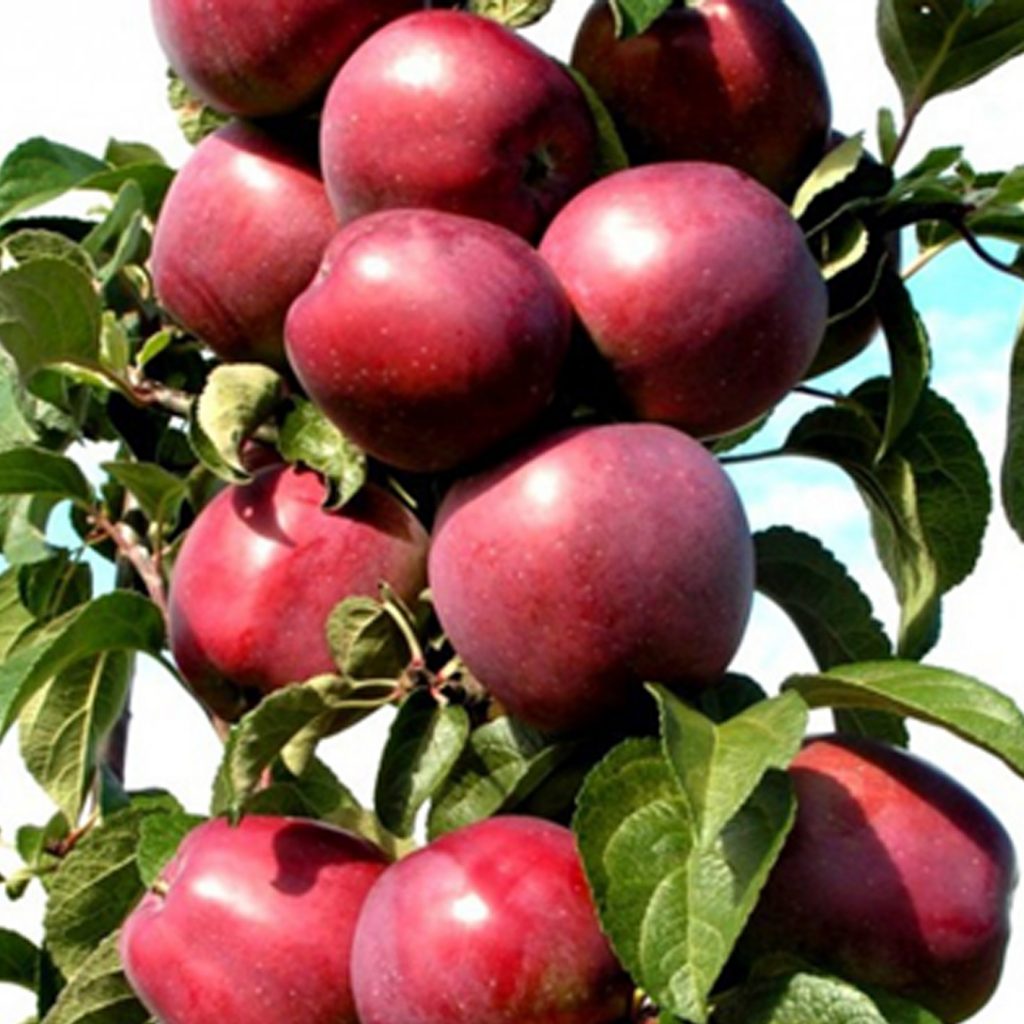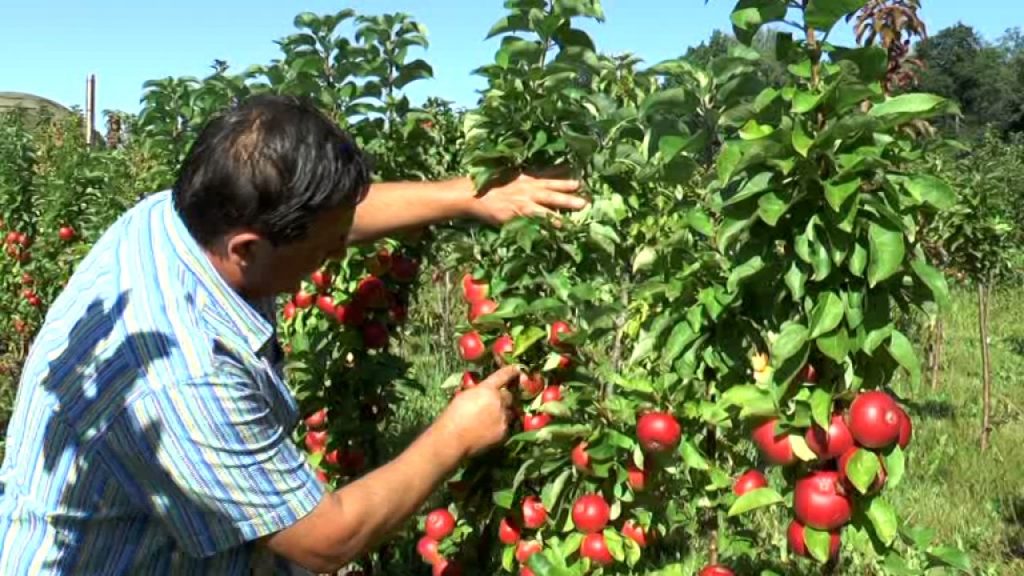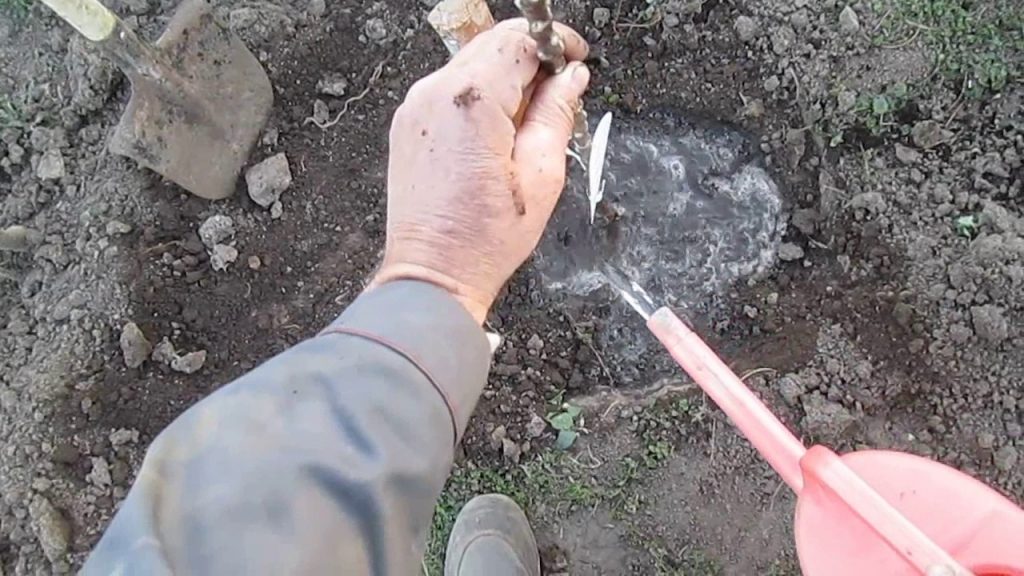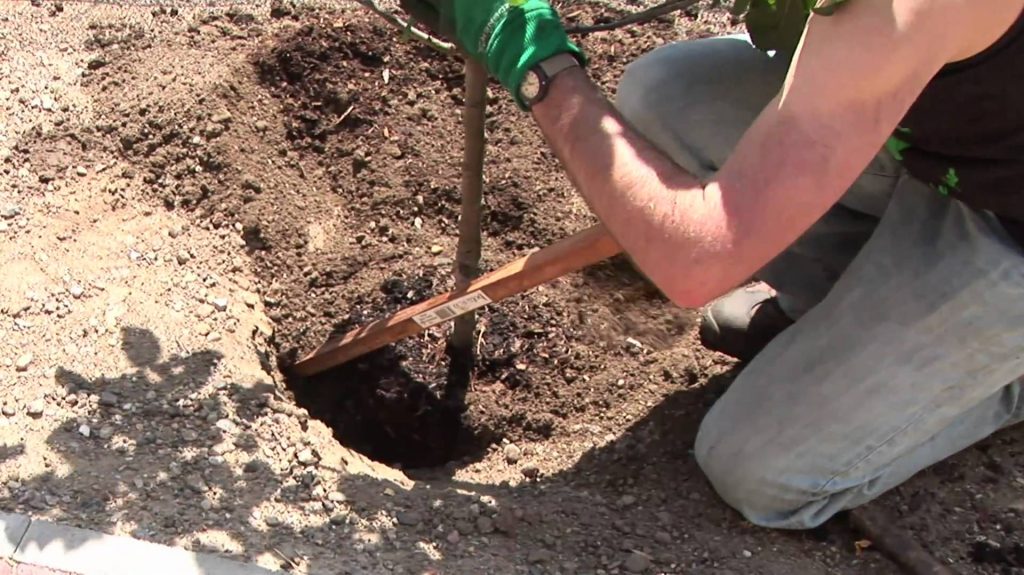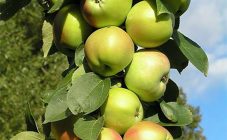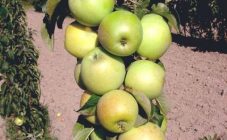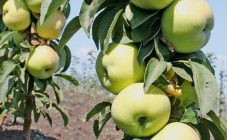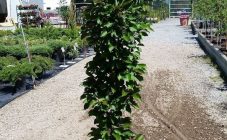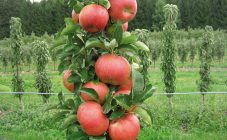Content:
The apple tree is one of the crops that are especially common in Russian garden plots. In recent years, an increasing number of gardeners have opted for columnar varieties. Among the most popular is such a variety as the Chervonets columnar apple tree.
History of creation
The variety was bred by the Moscow Institute of Horticulture in 1993. The variety was selected by crossing two varieties: Vazhak and the American donor SR 0523. The crop is recommended for planting in the Moscow region. In this region, the conditions for successful growth and fruiting of culture are simply optimal. The apple tree has enough moisture, sunny color and warmth.
Description of the variety
The apple tree Chervonets columnar belongs to the Moscow group. The tree has a semi-dwarf growth - from one and a half to two meters.
The variety has one interesting characteristic: as the crop ages, it begins to grow in breadth, which requires annual pruning.
The culture bears fruit with tasty and large apples, the average weight of which is about 350 grams. Some individual specimens can grow up to 450 grams. But in fairness, it should be noted that this happens very rarely. The average yield is about 6-7 kg per tree. The varietal species is distinguished by its early maturity and has such a significant characteristic as frost resistance. When planted on an industrial scale, we are talking about 80-100 tons per hectare.
It is necessary to collect fruits from the Chervonets apple tree strictly after their ripening. If the apples are overripe, they will taste bad.
The ripening period of the columnar apple Chervonets according to the description of the variety occurs at the end of summer. Ball-shaped fruits have a dense and glossy skin. After harvesting, the apple crop, subject to proper storage conditions, can lie for about two months. At the same time, the apple can both be eaten fresh and used for processing into preserves, jams, compotes, mashed potatoes and other canned food.
The columnar apple tree Chervonei has a not too long productive period - about 15 years, starting from the first harvest. The trees themselves safely live up to 50 years, but after 17-18 years of life, their cultivation becomes meaningless, since the yield is greatly reduced. When the apple trees reach a certain age, most gardeners prefer to completely uproot them and plant a new garden from scratch.
Features of agricultural technology
Crop care begins from the moment planting is completed. The basic principles of agricultural technology, the entire columnar class of apple trees is approximately identical.
Pruning
The first pruning in parallel with preventive treatment for diseases and pests is carried out in early spring, when the buds have not yet had time to swell.
Since columnar varieties normally do not form side branches, most often pruning consists of removing excess buds in order to regulate the load on the tree.
In the first year of plant life, all the buds are removed, in the second year, about a dozen flowers can be left.As for older plants, the number of buds on them can be increased every year.
Watering and loosening
Watering and loosening are two more conditions for the full care of the plant.
Watering should be done after the soil dries up. Never use a hose to water apple trees. Since the root system of a crop is shallow, such watering will inevitably cause significant damage to the plant. The columnar apple tree Chervonets tolerates sprinkling much better. Drip irrigation with dosed water supply to the plant root system is also suitable.
Watering the plant in standard summer weather is required on average once every three days. If the summer is hot, the amount of watering should be increased. In a similar situation, the Chervonets apple tree will have to be watered every other day or even every day. Mature plants generally do not need to be moistened more than once a week.
From about mid-July, the number of water procedures begins to be gradually reduced, in order to stop them completely in August. This is necessary so that the apple tree has enough time to form flower buds for the next season, finish its growth and successfully prepare for the cold season.
Top dressing
In the process of fruit formation, the Chervonets apple tree takes a large amount of nutrients from the soil, which is why plant fertilization should not be neglected under any circumstances.
The first feeding of the crop is done before the start of the growing season. Usually organic is used. This can be a solution of cow dung or slightly fermented chicken droppings. A urea solution is perfect as a nitrogen fertilizer. In the first half of June, a complex fertilization of plants with mineral compositions is carried out, which should be repeated in another month. To obtain a good harvest, three procedures are enough in one season.
Pest and disease control
Throughout the growing season, when growing an apple tree, you should be especially careful to monitor the appearance of harmful insects on the plant. In order not to miss this or that disease, it is easiest to observe the appearance of the culture. When the first symptoms appear, it is strongly recommended to start active measures aimed at solving the problem. Otherwise, the harvest may be at risk.
The last treatment with fungicides and insecticides should be carried out no later than one month before the start of the harvest. After leaf fall, the culture will need to be fed and processed for the last time in the season.
Wintering plants
Despite the fact that the Chervonets apple tree is considered to be cold-resistant, additional shelter for the winter will not harm the plant. You can use spruce branches, wood shavings or any other material that provides protection against moisture and rodent penetration. It is strongly not recommended to use straw as covering material. If it has been used for mulch, it should be removed in the fall. The fact is that straw is very attractive to all types of rodents.
Advantages and disadvantages
Like any other crop, the Chervonets columnar apple tree has both certain advantages and some disadvantages that are recommended to be taken into account when choosing a variety for planting.
The advantages may include the following characteristics of the variety:
- suitable for growing in Central Russia, including the Moscow region;
- has a fairly high index of winter hardiness;
- has one hundred percent immunity to diseases such as scab;
- has a high resistance to fungal diseases;
- fruits have excellent taste characteristics;
- apples tolerate transportation well;
- the crop can be stored after harvest for several months;
- compact tree structure;
- the convenience of caring for the plant, in view of its compactness and short stature;
- early fruiting.
Caring for a columnar culture is somewhat different from caring for an ordinary apple tree. But it cannot be called difficult. Even an inexperienced gardener can cope with the cultivation of the described columnar variety, if desired.
There are only two minuses to the Chervonets apple tree. We are talking about the high cost of plant seedlings and not a particularly long fruiting period. For some, these factors can play a decisive role in choosing a variety for planting.
Generally speaking, the Chervonets variety is quite worthy to be selected and cultivated. All the disadvantages will more than pay off with incredibly tasty apples at the end of summer.
